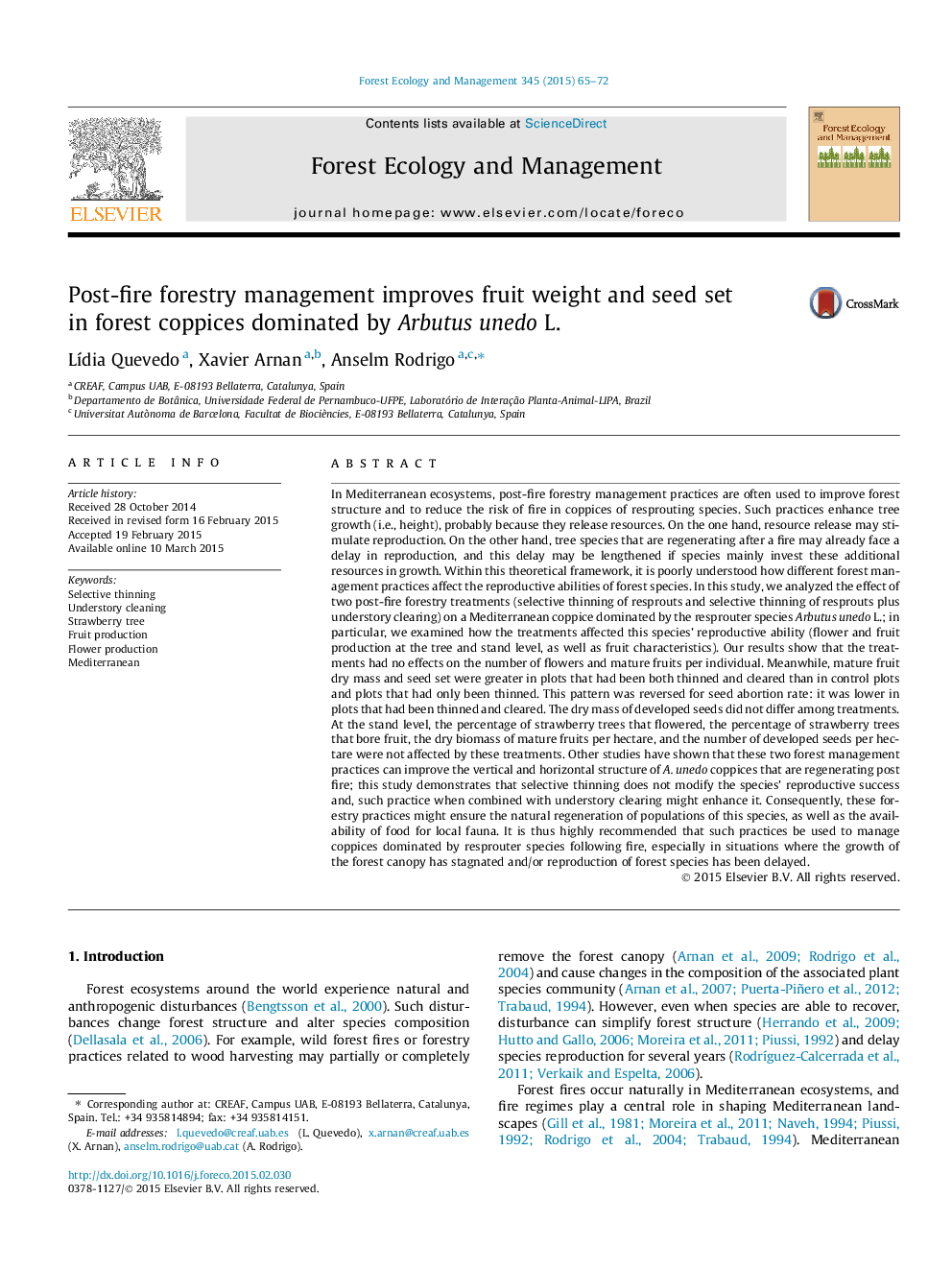| کد مقاله | کد نشریه | سال انتشار | مقاله انگلیسی | نسخه تمام متن |
|---|---|---|---|---|
| 86372 | 159182 | 2015 | 8 صفحه PDF | دانلود رایگان |

• We analyzed the effect of selective thinning on the reproduction of Arbutus unedo.
• This management had no effects on the number of flowers and mature fruits per individual.
• Fruit weight and seed set were greater in plots thinned and cleared.
• Selective thinning are suitable way of managing A. unedo forests.
In Mediterranean ecosystems, post-fire forestry management practices are often used to improve forest structure and to reduce the risk of fire in coppices of resprouting species. Such practices enhance tree growth (i.e., height), probably because they release resources. On the one hand, resource release may stimulate reproduction. On the other hand, tree species that are regenerating after a fire may already face a delay in reproduction, and this delay may be lengthened if species mainly invest these additional resources in growth. Within this theoretical framework, it is poorly understood how different forest management practices affect the reproductive abilities of forest species. In this study, we analyzed the effect of two post-fire forestry treatments (selective thinning of resprouts and selective thinning of resprouts plus understory clearing) on a Mediterranean coppice dominated by the resprouter species Arbutus unedo L.; in particular, we examined how the treatments affected this species’ reproductive ability (flower and fruit production at the tree and stand level, as well as fruit characteristics). Our results show that the treatments had no effects on the number of flowers and mature fruits per individual. Meanwhile, mature fruit dry mass and seed set were greater in plots that had been both thinned and cleared than in control plots and plots that had only been thinned. This pattern was reversed for seed abortion rate: it was lower in plots that had been thinned and cleared. The dry mass of developed seeds did not differ among treatments. At the stand level, the percentage of strawberry trees that flowered, the percentage of strawberry trees that bore fruit, the dry biomass of mature fruits per hectare, and the number of developed seeds per hectare were not affected by these treatments. Other studies have shown that these two forest management practices can improve the vertical and horizontal structure of A. unedo coppices that are regenerating post fire; this study demonstrates that selective thinning does not modify the species’ reproductive success and, such practice when combined with understory clearing might enhance it. Consequently, these forestry practices might ensure the natural regeneration of populations of this species, as well as the availability of food for local fauna. It is thus highly recommended that such practices be used to manage coppices dominated by resprouter species following fire, especially in situations where the growth of the forest canopy has stagnated and/or reproduction of forest species has been delayed.
Journal: Forest Ecology and Management - Volume 345, 1 June 2015, Pages 65–72